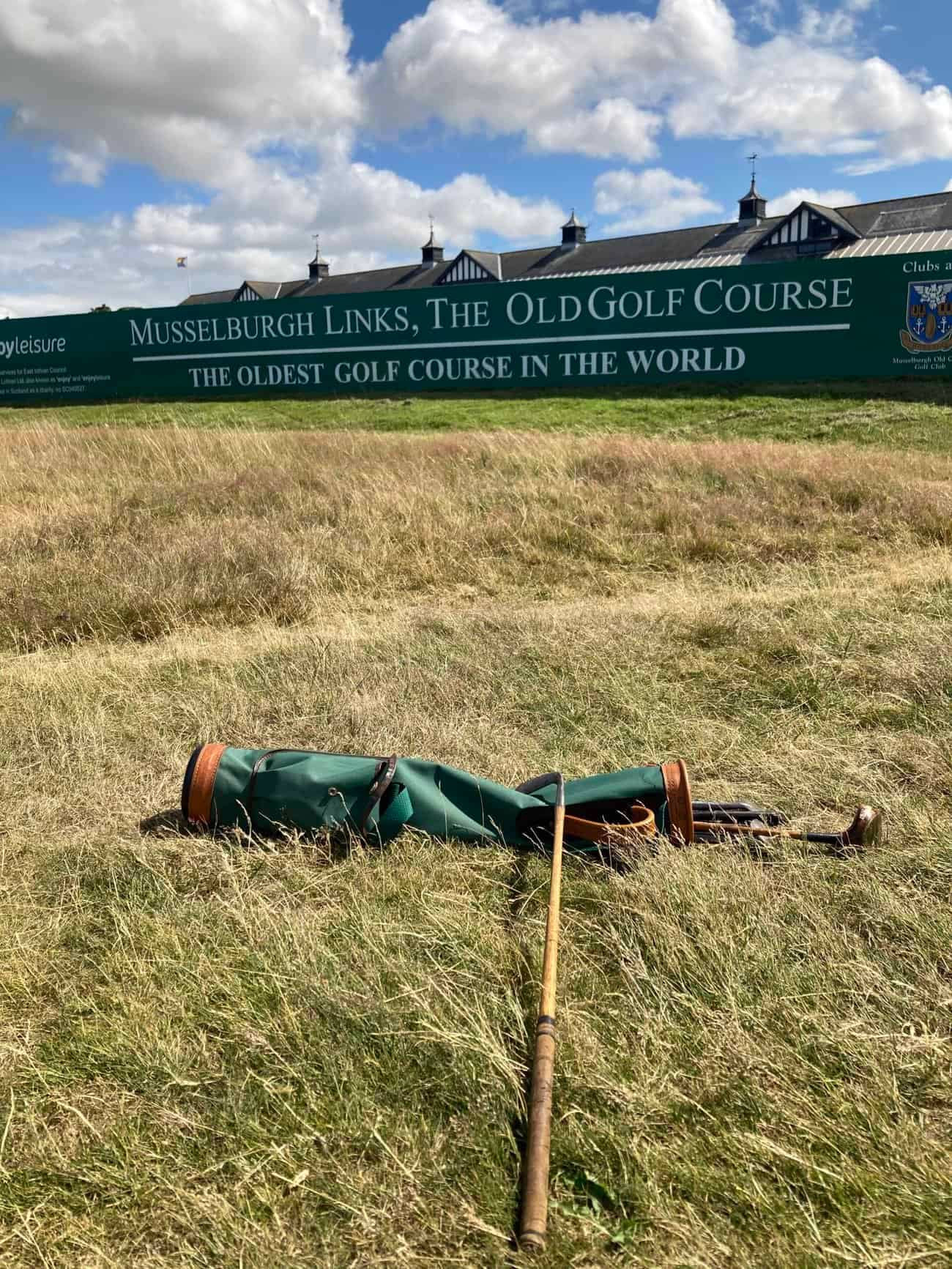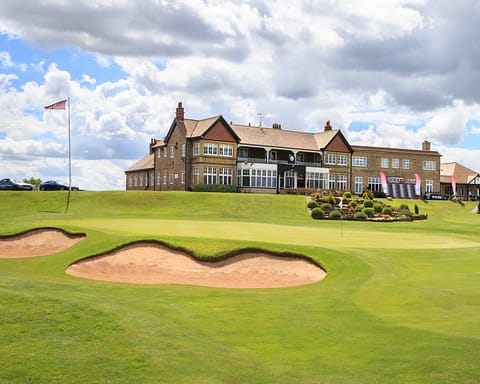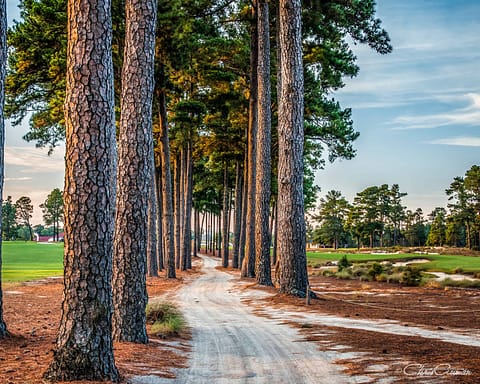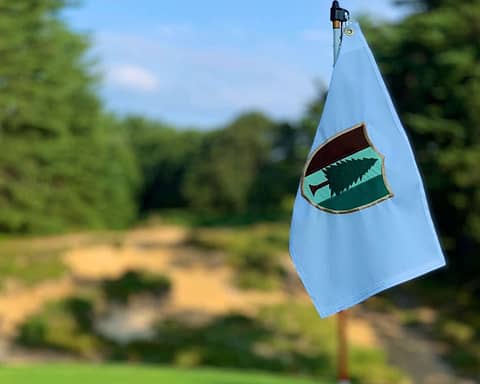As you walk off the last green of what is, to some, the oldest golf course in the world, it’s impossible to shake the feeling that you’ve just been transported back in time to the origins of our game.
Musselburgh Links, The Old Golf Course, is a living museum and its storied, almost mythical history is the stuff of golfing lore. It’s tempting to describe it as a relic, but it’s much more than that – a visit to Musselburgh is an invitation to experience golf as it was. There are those who’ll tell you golf has been played here since 1567 when Mary Queen of Scots took to the links. To put that date into context, William Shakespeare was born three years earlier in Stratford-upon-Avon.
The earliest documented evidence of golf here dates to March 2nd, 1672, when prominent lawyer, Sir John Foulis of Ravelston, lost his match against two men known only as Lyon and Gosford. The Open Championship was held here six times between 1874 and 1889 and while The Honourable Company of Edinburgh Golfers called this links home for several years when they loved along the East Lothian coast to a piece of land known as Muirfield, The Open went with them and never returned to Musselburgh. And yet there are few more historically important sites anywhere in golf.

For instance, the 4 1/4-inch diameter hole size that is an everyday part of golf for all of us, exists because it happened to be the width of the implement used to cut holes here at Musselburgh Links. The Royal & Ancient would later make it the standard.
The oldest golf course in the world? The Old Course at St Andrews would have a thing or two to say about that and in recent times the official Guinness World Record has switched between the two. History is only one part of Musselburgh’s magic, however. What of the setting? Golf is played in some amazing places around the world, from the cliffs of the Monterey Peninsula to the arid Australian outback – there’s even a course in the Korean Demilitarised Zone. But Musselburgh Links is played almost entirely within the confines of the racecourse, which was built around it in 1816. And that adds a new layer to the experience.

White stakes, which so often striker fear into golfers, are furlong poles here. The 1st tee box is tucked into a corner where the stables meet the clubhouse and it isn’t unusual for first time visitors to walk through the wrong door and end up in the racing grandstands, which were once the clubhouse of the Honourable Company of Edinburgh Golfers. Ultimately racetrack and golf club exist in harmony. On race days, the clubhouse is used by horse owners and is connected to the stables. For golfers there is a chart next to the starter which highlights the last tee time of the day when horses will be on the track. You have been warned.
What of the golf course itself? Well, it doesn’t feel quite right to use modern equipment here and so hickory clubs were the order of the day. The original links was made up of just seven holes. Another was added in 1838 before the completed 9-hole layout was open for play in 1870. The par-3 1st demands a carry over a footpath and the width of the racetrack towards a green which sits in the curve of the oval track. As you walk along the fairway, entering the inside of the track, it feels like the race has begun.
As I had discovered at North Berwick, the key to using the hickory golf clubs is to swing slow. Standing on the second tee with my set of hickories, it felt like – the outfits aside – very little had changed since the days when Willie Park Jr. was winning The Open Championship on these very holes. By modern standards the holes themselves are not long, the 9-hole course measures less than 3,000 yards, but with the club encouraging the use of hickory golf clubs and making them available for hire, the course doesn’t feel easy or lacking in length. Not only does every shot come with more challenge but the connection to the past is more visceral as you walk in the footsteps of the game’s founding fathers, on the same ground and with the same equipment.
The 2nd and 3rd holes head east and within a hard fade of Musselburgh’s main road, which runs within reach. Local rules say the road is in play and legend has it that a shot played from this very road led to the brass-soled ‘brassie’ club being invented. That’s not the only legend to exist on this part of the course. The 2nd hole, ‘The Graves’ is said to be the burial site of slain soldiers from the Battle of Pinkie in 1547. The graveyard was built in the vein hope of stopping golfers from playing here.
The tee shot on the 4th hole takes you back out of the racetrack and towards Mrs Forman’s Inn, after which the hole is named.
In the distant past, the Inn – the farthest point from the clubhouse – offered refreshments to golfers through a hatch in the wall. This challenging par-4 plays tight against the fencing of the racetrack, a tee shot landing too far right requires an approach over or through the fencing, depending on conditions, onto a well defended green. The 5th is the only hole on the course played entirely outside of the racetrack and feels much more like a par-3 than the 1st.

On the 6th tee box, the fencing of the racetrack is removed creating an unencumbered path to the fairway. This hole begins the turn home, guided the rest of the way in by Arthur’s Seat in Edinburgh in the distance. The plateau green is truly memorable and makes for a plethora of interesting pin positions. The 7th is the only par-5 on the course at 479 yards from the tips. With modern clubs it would be a birdie opportunity but with hickories it is an altogether more significant challenge. The 9th is a tough dogleg par-4 with a very appropriate nine bunkers ready to swallow up your ball if you haven’t yet mastered the niblick in your leather bag.
As you walk off the course and return your hickories to a place they truly belong, take a moment to reflect and let it all sink in. As you might expect from the oldest golf course in the world, or one of them, this is not a place with perfectly manicured fairways or one where the greens run at 12 on the stimp. You may get the odd bad lie and unfortunate bounce but embrace it. Golf, as it was once, was not a perfect game where rangefinders, GPS watches and yardage charts always meant you had the perfect club for the perfect yardage. Use your eyes, rely on your instincts, and get creative.
There are few places anywhere in the world which offer you the chance to play this kind of golf, so make the most of it. Musselburgh Links is part of the DNA of the game of golf and if you allow it to, by the time you leave that final green, it must just feel like it is a part of yours.
*To visit Musselburgh Links visit musselburgholdlinks.co.uk or call 0131 653 5122









